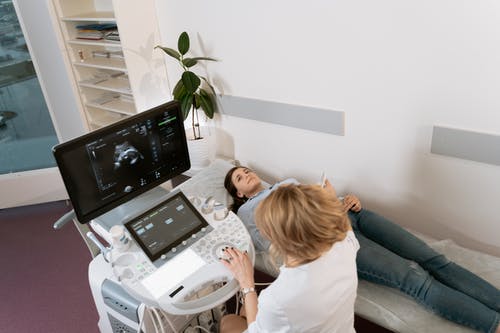The fetal anomaly scan, often referred to as the mid-pregnancy scan or 20-week scan, is one of the most important ultrasounds during pregnancy. This detailed scan is designed to check the development of the baby and to detect any structural abnormalities. Usually performed between 18 and 22 weeks of pregnancy, the fetal anomaly scan provides parents and healthcare providers with critical information about the baby’s growth, development, and overall health.
What is a Fetal Anomaly Scan?
A fetal anomaly scan is a detailed ultrasound performed during the second trimester to assess the physical development of the fetus. The scan looks for structural abnormalities in various parts of the baby’s body, including the heart, brain, spine, kidneys, and limbs. It is a routine part of prenatal care in many countries and is used to identify potential health concerns that might need closer monitoring, early intervention, or specialized care after birth.
This scan is non-invasive and painless, using sound waves to create images of the baby inside the womb. While it is primarily diagnostic, it also offers expectant parents a chance to see their baby in more detail.
What Does the Fetal Anomaly Scan Look For?
During the fetal anomaly scan, the sonographer (the trained professional who performs the ultrasound) will carefully examine several key areas of the baby’s anatomy. The main objective is to detect any major physical abnormalities, but the scan can also provide insights into the overall health and development of the fetus. Below are the main areas examined during the scan:
1. The Baby’s Heart
The heart is one of the most critical areas to assess. The sonographer will check for the presence of four chambers, the correct positioning of the major blood vessels, and the function of the valves. This scan can detect heart defects like congenital heart disease, which can range from minor to severe. Early detection allows for planning further tests or treatments that may be necessary after birth.
2. The Brain and Spine
The fetal anomaly scan assesses the development of the brain and spine to check for structural abnormalities. The sonographer will check for conditions such as spina bifida, where the spinal cord does not form properly, and other neurological issues. Abnormalities in the brain structures can indicate conditions like anencephaly or hydrocephalus.
3. Face and Cleft Lip
The scan examines the baby’s face for any obvious physical anomalies, including a cleft lip. While a cleft lip can sometimes be accompanied by a cleft palate (a gap in the roof of the mouth), the palate itself is more challenging to see on ultrasound. Detecting cleft lip early helps plan for any treatments or surgeries after birth.
4. Abdominal Organs
The sonographer will also check the baby’s stomach, kidneys, and bladder to ensure they are developing correctly. Issues such as gastroschisis, where the baby’s intestines develop outside the abdominal wall, or exomphalos, a condition where some organs remain outside the body, can be detected during this scan. Kidney abnormalities, such as hydronephrosis (swelling of the kidneys due to urine buildup), are also evaluated.
5. Limbs and Skeletal System
The scan examines the baby’s arms, legs, hands, and feet to check for proper development. This includes counting fingers and toes and looking for conditions such as clubfoot or limb abnormalities. The sonographer will also assess the bones to ensure the baby’s skeletal structure is growing as expected.
6. Placenta and Amniotic Fluid
In addition to examining the baby, the fetal anomaly scan also evaluates the placenta to ensure it is functioning properly. The position of the placenta is checked, and conditions such as placenta previa (where the placenta covers the cervix) can be identified. The scan also measures the amniotic fluid levels, which are essential for the baby’s development.
What Happens During a Fetal Anomaly Scan?
The fetal anomaly scan is typically performed at a hospital or clinic by a trained sonographer. It is a non-invasive and painless procedure that usually lasts between 20 to 40 minutes. Here’s what to expect during the scan:
1. Preparation
You may be asked to have a full bladder before the scan, especially early in pregnancy, as this helps improve the clarity of the ultrasound images. You’ll be asked to lie down on an examination table, and a gel will be applied to your abdomen to ensure good contact between the ultrasound probe and your skin.
2. The Procedure
The sonographer will move a handheld device called a transducer over your abdomen to capture images of the baby. These images are projected onto a screen, allowing the sonographer to examine the baby’s anatomy in detail. You may be able to see the baby moving on the screen, which can be an exciting moment for parents.
During the scan, the sonographer will take various measurements of the baby, including the head circumference, abdominal circumference, and femur length. These measurements help assess the baby’s growth and development.
3. Results
In most cases, the results of the scan are discussed immediately after the procedure. If any abnormalities are detected, the sonographer may refer you to a specialist for further evaluation. In some cases, additional tests such as a fetal echocardiogram (a detailed heart ultrasound) or amniocentesis (a test that examines the baby’s chromosomes) may be recommended.
What Can the Fetal Anomaly Scan Detect?
While the fetal anomaly scan can detect many structural abnormalities, it’s important to understand that it cannot identify all conditions. Some abnormalities, especially those related to genetic or chromosomal disorders, may not be visible on ultrasound. Conditions like Down syndrome, for example, may not be detected unless other markers or risk factors are present, and further testing like non-invasive prenatal testing (NIPT) or amniocentesis is needed.
Some of the conditions that can be detected or suspected during a fetal anomaly scan include:
- Congenital heart defects
- Spina bifida
- Cleft lip
- Limb abnormalities
- Gastroschisis or exomphalos
- Hydronephrosis or kidney abnormalities
- Brain malformations like anencephaly or hydrocephalus
What if an Abnormality is Found?
If an abnormality is detected during the fetal anomaly scan, your healthcare provider will discuss the findings with you and explain the next steps. Depending on the nature of the abnormality, you may be referred for further testing or to a specialist who can provide a more detailed evaluation.
Some conditions may require additional monitoring throughout the pregnancy, while others may need treatment after birth. In certain cases, early intervention or surgery may be needed to correct the problem. While it can be stressful to learn that there may be an issue, early detection allows healthcare providers to plan for the best possible care for both mother and baby.
Limitations of the Fetal Anomaly Scan
While the fetal anomaly scan is a powerful tool for assessing the baby’s development, it does have some limitations:
- Not all abnormalities can be detected. Some conditions may not be visible on ultrasound, especially if they are related to chromosomes or genetics.
- Position of the baby. Sometimes the baby’s position can make it difficult to get clear images of certain parts of the body, requiring a follow-up scan.
- Size of abnormalities. Some issues may not become apparent until later in pregnancy, so additional ultrasounds may be necessary.
Despite these limitations, the fetal anomaly scan is an important step in ensuring the baby’s health and preparing for a safe and healthy delivery.
Conclusion
The fetal anomaly scan is a vital part of prenatal care, offering a detailed assessment of the baby’s anatomy and providing valuable information about the baby’s development. For many parents, this scan is a reassuring milestone, confirming that their baby is growing well. However, if abnormalities are detected, the scan also provides an opportunity for early intervention and planning, ensuring that any issues can be addressed as early as possible.


